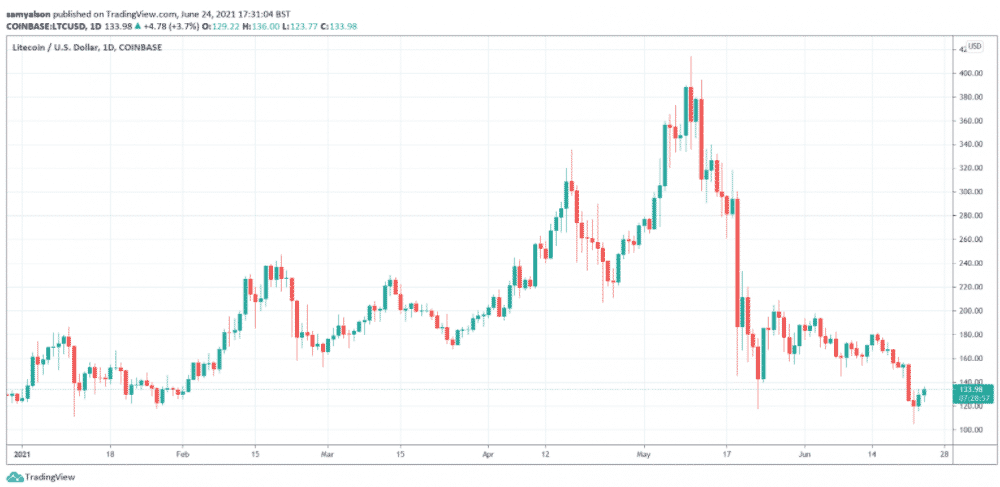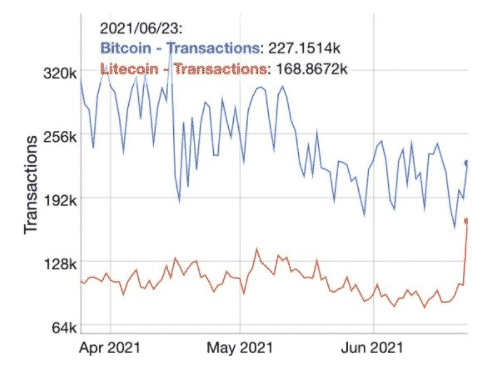The LTC transactions compared to bitcoin are 75% and are still growing according to the data compiled by @MasterBTCLtC that we read more about in our latest Litecoin news.
The LTC transactions compared to BTC are 75% so will the transactions flip Bitcoin transactions? Some believe that this could happen soon. What’s more important is that @MasterBTCLTC suggests this can be the start of the uptrend that will lead flippening in transaction count sometime this year. Considering the wider factors, like the environmental argument against proof of work tokens, what can we expect from this trend?

Even though Litecoin is a bitcoin fork, it differs in terms of the hashing algorithm, supply, and block transaction times so LTC has a 2.5 minute block confirmation time versus 10 minutes for BTC. The focus on speed and the low fees are making it more suitable for microtransactions and point of sale payments. The average Bitcoin transactions are coming at $0.0104 and in comparison, the average BTC transaction fee is set at $8.131. But the fundamental difference between the two lies in the LTC use of the new Scrypt Proof of Work algorithm over the BTC SHA-256.
Crypto mining can happen using a GPU or a CPU or even an ASIC miner. The miners can generate more hashes per second and match the target data and win the block so the ASIC miners have a distinct advantage over the other mining methods. But Litecoin developers chose Scrypt because it is less responsive to ASIC mining. The ASIC miners came on the market and a huge portion of LTC mining still occurs using GPUs and CPUs which makes mining Litecoin more accessible for daily use. Much has been said about the environmental damage that was caused by BTC mining in recent weeks and although LTC and BTC employed computationally intensive proof of work algorithms, the scrypt model relies on memory rather than on the processing power.

The upshot to this reduces an advantage of the ASICs and increases the network participation as well as energy efficiency so some would argue that LTC is a much greener token. The Research complied by TRG Datacenters shows that LTC consumed 18,522 kilowatt-hours per transaction so it doesn’t come as a surprise that BTC came at the bottom of the list and consumed 707 kilowatt-hours per transactions. DOGE, on the other hand, uses the Scrypt algorithm consumed at 0.12 kilowatt-hours per transaction, and at present time, it is too speculative to state the users that are turning to Litecoin for all the green reasons. However, at the same time, three months of data complied shows a downtrend in usage for bitcoin.
DC Forecasts is a leader in many crypto news categories, striving for the highest journalistic standards and abiding by a strict set of editorial policies. If you are interested to offer your expertise or contribute to our news website, feel free to contact us at editor@dcforecasts.com






















Discussion about this post